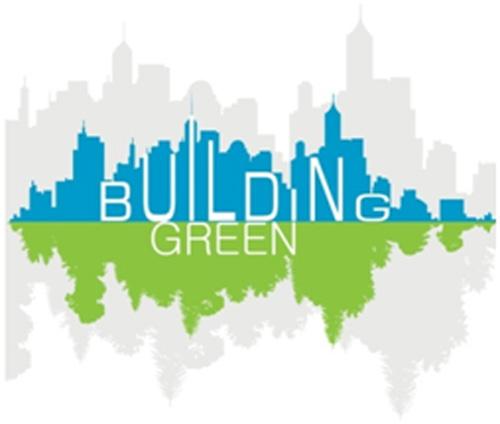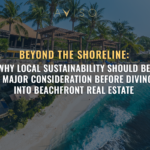
Conventional Buildings’ Days Are Numbered
We spend an average of 90% of our time in buildings which air quality is 2-5X WORSE than outside air.
This is according to the US EPA, which regularly monitors environment-related health hazards.
Moreover, our indoor environment is more toxic than our outdoor environment, and in some cases, the air measurements indoors have been found to be 100 times more polluted which poses health concerns.
Conventional buildings tend to have less desirable features like insufficient air circulation, poor lighting, mold build up, temperature variances, carpeting and furniture materials, pesticides, toxic adhesives and paints, and high concentration of pollutants. On the other hand, green buildings have proper ventilation and non-toxic low emitting materials that create healthier and more comfortable living and working environments.
Buildings in the US consume 39% of the country’s total energy consumption.
Furthermore, developing countries like China, India and Southeast Asia are expected to eventually consume just as much due to increased wealth brought about by globalization. Unfortunately, more intensive use of urban space equate to higher energy consumption, which comes with tremendous risk of climate change. The implied increase in the subsequent use of fossil fuels makes supplying energy requirements increasingly difficult.
We rely on coal, oil and gas (the fossil fuels) for over 80% of our current energy needs – a situation which shows little sign of changing over the medium-term without drastic policy changes. On top of this, energy demand is expected to grow by almost half over the next two decades. The use of non-renewable energy will deteriorate the environment and will have devastating consequences for the global economy and people’s quality of life.
An energy crisis is bound to happen if we continue to act passive. Fortunately, initiatives have been made to promote energy efficiency in the real estate sector. One such initiative is requiring a systems-based approach in designing and constructing green buildings. Under this approach, all elements of the building shell; foundation, framing, roof structure and windows play key roles in defining the potential energy savings.
Retro-fitting exiting buildings (i.e., installing green features in conventional buildings) can save substantial amounts of energy—up to 90 percent decrease from previous, non-green consumption. For commercial buildings, that decrease translates to having significantly lower daily maintenance and operation costs. This is true whether a building is built up to LEED or BERDE standards from the start or retrofitted to meet them.
Typically, investors commonly expect green building features to pay for themselves after completion, leading to a faster return on investment over time. And due to increased income from energy savings, green features will also increase the property values over time.
The increased efficiency provided by green technologies in new buildings is significant as energy consumption in buildings will only increase over time.
Buildings Worldwide consume nearly 40% of the world’s energy, 25% of its wood, and 15% of its water.
We consume around half of the world’s non-renewable resources for construction, making it one of the least sustainable industries. We manipulate the natural environment to better suit our needs, so today our daily lives are carried out in and on constructions of one sort or another: we live in houses, we travel on roads, and we work and socialize in buildings and built environments of all kinds. Millennials and future generations of people will be so highly dependent on buildings that if we continue our traditional building practices, there will come a time when our planet can no longer support the current level of our resource consumption. We have to conserve resources to ensure sufficient and healthy living spaces.
The United States Green Building Council considers that on average, green building currently reduces energy consumption by 30%, carbon emissions by 35%, water consumption by 30% to 50%, costs relating to waste by 50% to 90%.
Owing perhaps to the natural incentive of efficiency, Global green building continues to double every three years. Since the start of 2015, green buildings are expected to double globally by the year 2018.The anticipated growth will largely be driven by countries that still have developing green markets, with firms from Mexico, Brazil, Colombia, Saudi Arabia, South Africa, China and India reporting dramatic growth in the percentage of their projects that they expect to certify as green.
Brazil expects six-fold growth in the percentage of companies that expect to certify the majority of their projects green; five-fold growth is expected in China; and four-fold growth is expected in Saudi Arabia (from 8% to 32%).
The Philippines’ also have started adopting the global trend. 22 buildings in Makati and Bonifacio Global City (BGC) are currently applying for the Green Building certification.
In fact, 90% of new building constructions in Bonifacio Global City and 80% of new building constructions in Makati Central Business District can be considered green to some extent or other. With the world seeing the importance and benefits of green buildings, conventional buildings will be inevitably replaced by “greener” and sustainable buildings, paving the way future for healthier and brighter future. What about you? Are you reading this article in a green building?
____________________________________________________________________________________________________________________
Sources:
- The Inside story: A guide to indoor air quality. (1988). Washington, DC: U.S. Environmental Protection Agency, Office of Air and Radiation U.S. Consumer Product Safety Commission.Retrieved from https://www.epa.gov/indoor-air-quality-iaq/inside-story-guide-indoor-air-quality
- Romm, J. J., & Browning, W. D. (1994). Greening the building and the bottom line: Increasing productivity through energy-efficient design. Retrieved from http://www.rmi.org/Knowledge-Center/Library/D94-27_GreeningBuildingBottomLine
- http://www.legrand.com/EN/green-building-description_12850.html
- http://fidic.org/sites/default/files/World%20Green%20Building%20Trends%202016%20SmartMarket%20Report%20FINAL.pdf
____________________________________________________________________________________________________________________













